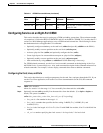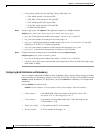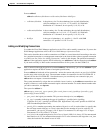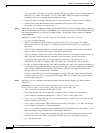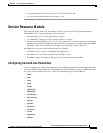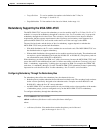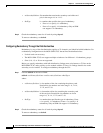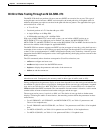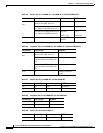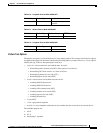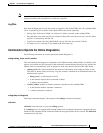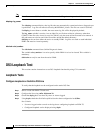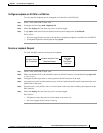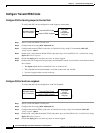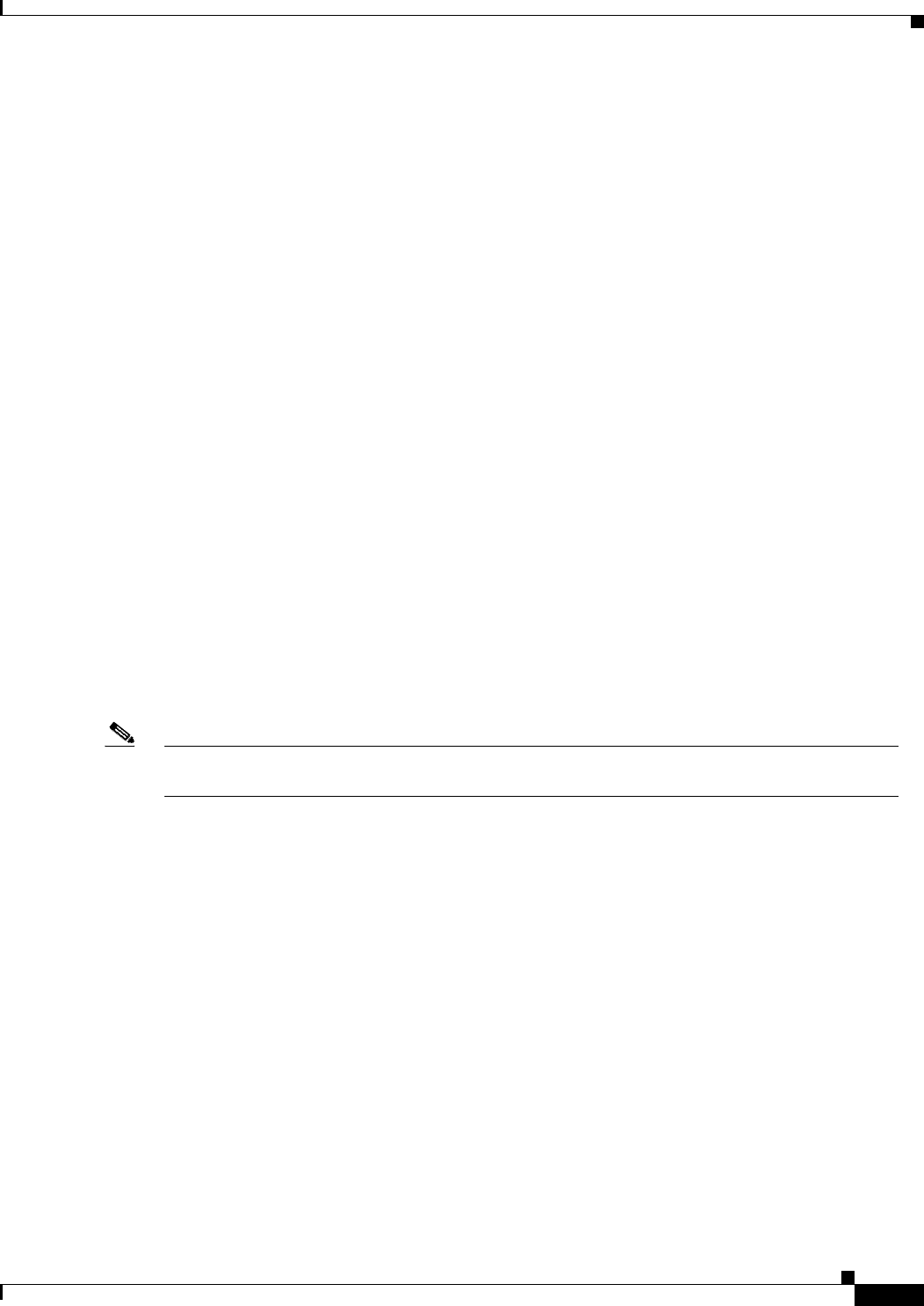
6-53
Cisco MGX 8230 Edge Concentrator Installation and Configuration
Release 1.1.31, Part Number 78-11215-03 Rev. B0, May 2001
Chapter6 Card and Service Configuration
Service Resource Module
Bit Error Rate Testing Through an MGX-SRM-3T3
The MGX 8230 shelf can perform a bit error rate test (BERT) on an active line or port. This type of
testing disrupts service because a BERT session requires the tested path to be in loopback mode. In
addition, the pattern test replaces user-data in the path with the test pattern. The applicable line types
and variations for a DS1 are:
• A T1 or E1 line
• Fractional portions of a T1 line that add up to a DS1
• A single 56 Kbps or 64 Kbps DS0
• A DS0 bundle consisting of N x 64 Kbps DS0s
With a set of MGX-SRM-3T3/C cards in the system, you can initiate a BERT session on an
MGX-FRSM-2CT3 or any eight-port service module. (In contrast, the MGX-FRSM-2T3E3,
MGX-CESM-T3, and MGX-CESM-E3 do not use the MGX-SRM-3T3/C for BERT. See the sections for
these service modules in this chapter for applicable BERT.)
The MGX 8230 bus structure supports one BERT session per upper or lower bay, so the shelf can run a
maximum of two sessions at once. When you specify the target slot through the CiscoView application
or the CLI, the system determines if a BERT configuration already exists in that bay. After the system
determines that no BERT configuration exists in the applicable bay, the display presents a menu for the
BERT parameters.
The CLI commands (whose functions correspond to CiscoView selections) are:
• cnfbert to configure and start a test
• modbert to inject errors into the BERT bit stream
• dspbert to display the parameters and results of the current test
• delbert to end the current test
Note When a BERT session begins, all connections on a line or port go into alarm and return to normal
when the test ends. Consequently, the test may result in other types of traffic (such as AIS).
During configuration, the parameter display or menu items depend first on the card type and whether the
test medium is a physical line or a logical port. Subsequent choices are test type, test patterns, loopback
type, and so on. See the Cisco MGX 8230 Wide Area Edge Switch Command Reference for details on
cnfbert and the other BERT commands. The concatenation of menu to menu is extensive, so this section
contains tables of menu selections based on the card types and the test type.
The test type can be pattern, loopback, or DDS seek. The choice of test type leads to further menu
displays. Following the tables of menu choices, the remaining sections define the parameters in these
menu choices.
• For AX-FRSM-8T1, AX-CESM-8T1, and MGX-FRSM-2CT3, see Table 6-5 pattern tests and
Table 6-6 for loopback tests.
• For AX-FRSM-8E1 and AX-CESM-8E1, see Table 6-7 for pattern tests and Table 6-8 for loopback
tests.
• For MGX-AUSM-8T1, see Table 6-9 for pattern tests and Table 6-10 for loopback tests.
• For MGX-AUSM-8E1, see Table 6-11 for pattern and Table 6-12 loopback tests.



